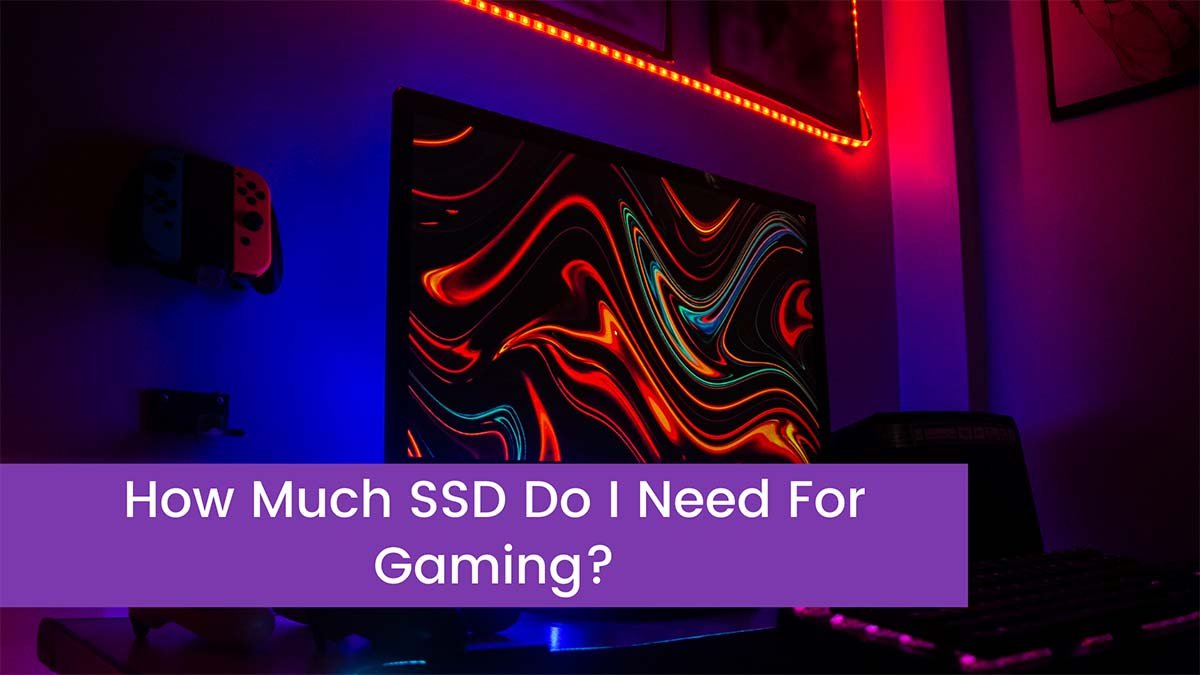Getting one of the finest SSDs for your system is crucial since pairing a PC with one of the top CPUs for gaming with poor storage is the quickest way to slow it down. Your processor can process billions of cycles per second, yet it often wastes time waiting for data from your hard drive.
Hard drives are very slow because they include platters that must spin up and a read/write arm that must physically navigate to the data sectors you’re looking for. A good solid-state drive is required for best performance (SSD).
You can learn a lot more about the differences between hard drives and SSDs by reading our features. While SSDs are almost always faster, there are still situations (such as bulk storage) where hard drives are still a viable option. Because a 10TB hard drive costs less than $200 and a 4TB SSD costs more than $400.
Check out our Best SSDs page if you’re already familiar with drive kinds and want specific recommendations. Also, if you’re looking for an external drive or SSD for backup or portable storage, check out our Best External Drives page. If you don’t have a Ph.D. in SSD, however, there are a few things to think about when shopping.
As drives like Intel’s 660p and its successor, the Intel 665p, begin to undercut popular drives using the old SATA interface while giving a faster performance, Serial ATA may be on its way out. However, Samsung recently announced the 870 EVO, indicating that SATA is far from dead. Existing SATA drives will have to continue to drop in price in order to compete on pricing, as they will not be able to keep up with NVMe drives in terms of performance.
However, PCIe 3.0 NVMe SSDs from Gigabyte, Corsair, Patriot, and Samsung have surpassed NVMe PCIe 3.0 SSDs as the fastest storage available. These drives do, in fact, significantly increase sequential speeds (thanks to a doubling of the PCIe bus bandwidth).
To operate one of these drives at full speed, you’ll need an AMD X570 or B550 motherboard, or an Intel Z590 motherboard with one of Intel’s future Rocket Lake-S processors. In many ways, users may not experience much in the way of real-world benefits from these drives, except the obvious boost in sequential performance. However, the next generation of PCIe 4.0 drives, such as WD Black’s SN850, are undeniably agile.
How much can you spend on SSD?
The majority of consumer drives have capacities ranging from 120GB to 2TB. While 120GB drives are the most affordable, they aren’t large enough to carry a lot of software and are typically slower than their larger rivals. Many businesses have begun to phase out low-capacity equipment. Upgrading from 120 to 250GB costs as little as $15 extra, and it’s money well spent.
The difference between 250GB and 500GB discs can also be minor. For most users, the sweet spot between price, performance, and capacity used to be 500GB, but 1TB is quickly becoming the better option, especially when 1TB drives drop to $100 or less.
There are also a growing number of drives with capacities of more than 2TB (mostly from Samsung). However, because they’re often very pricey (above $400/£400), they’re only worthwhile for professional users that require a lot of room and speed and aren’t afraid to pay for them.
What type of SSD can your PC handle?
Solid-state drives are now available in a variety of form forms and can be used with a variety of hardware and software connectors. The type of drive you’ll need is determined by the device you’re using (or are intending on buying). If you have one of the greatest gaming PCs or are building a PC with a current mid-to-high-end motherboard, you may be able to use most (if not all) of the modern drive kinds.
In addition, most new compact laptops and convertibles use the gum-stick-shaped M.2 form factor, leaving no room for a typical 2.5-inch laptop-style drive. In a growing number of cases, laptop manufacturers are soldering the storage directly to the board, making it impossible to upgrade.
So, before you buy, you should examine your device’s handbook or use Crucial’s Advisor Tool to figure out what your options are.
Which form factor do you need?
There are three basic form factors for SSDs, plus one unusual outlier.
2.5-inch Serial ATA (SATA)
These drives look like regular laptop hard drives and attach using the same SATA cables and interface that any fairly competent upgrader should be familiar with. These drives should be drop-in compatible if your laptop or desktop has a 2.5-inch hard disc bay and a spare SATA connector (though you may need a bay adapter if installed in a desktop with only a larger, 3.5-inch hard drive bays free).
SSD Add-in Card (AIC)
Because they use the PCI Express interface rather than SATA, which was built over a decade ago to accommodate rotating hard drives, these drives have the potential to be significantly faster than most other drives. They also have more PCIe lanes available than other M.2 SSDs.
AIC drives fit into motherboard slots that are usually reserved for the top graphics cards or RAID controllers. Of course, this means they’re only available for desktops, and installing them requires an empty PCIe x4 or x16 slot.
M.2 SSDs
M.2 SSDs, which are about the size of a stick of RAM but much smaller, have become the standard for compact laptops, but they can also be found on most desktop motherboards.
Many high-end boards even offer two or more M.2 slots, allowing you to use RAID with the SSDs.
Although the majority of M.2 drives are 22mm broad and 80mm long, some are shorter or longer. Their names contain a four- or five-digit number, with the first two digits signifying width and the remaining digits representing length. M.2 Type-2280 is the most commonly used size.
Many desktop motherboards offer anchor points for longer and shorter drives, even though laptops normally only function with one size. M.2 drives with capacities of 2, 4, or even 8TB are the most common. So, if you have a big budget and a lot of storage capacity, and M.2 is the way to go.
conclusion
We conclude the above article by saying that the attraction of high-speed SSDs (that’s Solid State Drives, for those who don’t know) is strong, especially when load times are slowing down your entire team between rounds of Rainbow Six: Siege. Your randomly-matched squadmates yell ‘SSD’ in text chat, well aware that your aging hard drive is slowing everyone down. When determining whether to use an SSD or a hard drive for gaming, there are a number of things to consider. When making your decision, take into account the cost, form factor, capacity, speed, durability, and other factors.




